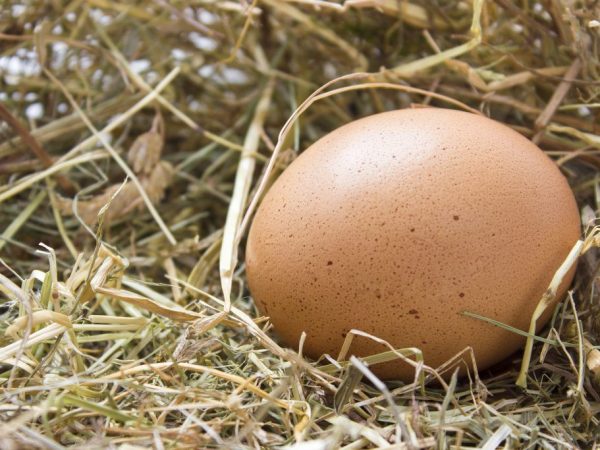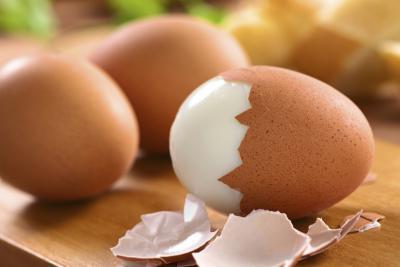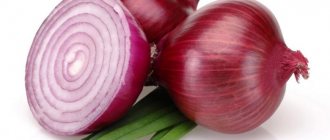Poultry »Chickens
0
2852
Article rating
If you are going to raise chickens not only in order to please your own taste buds, but also for the sake of replenishing your wallet, you should find out how much a hen's egg weighs without shell and with it, because the price of the product and the category to which it belongs are in direct depending on its size.

How much does a chicken egg weigh without shell
Average weight of one egg
Chicken eggs are categorized and graded. And if their marking contains the letter D, then they are according to GOST no more than three days. The marking with the letter C indicates that they are up to 7 days old, since after this period natural subtle processes begin in them, which can cause poisoning.
The weight of one chicken testicle ranges from 35 g to 75 g. More precisely, the variety indicates the weight, which is marked according to the following criteria:
- O - selected - weighs 65-75 g. The average is 70 g, if you remove the shell - 60-70 g. Yolk - up to 30 g, protein - up to 40 g.
- 1 - first grade - within 55-65 g, on average - 60 g. Without shell - up to 60 g. Yolk - 19-23, protein - 30-38.
- 2 - second grade - eggs weighing 45-55 g, minus the shell - up to 50 g. Yolk - 12-16 g, protein - 19-25 g.
- 3 - third grade - 35-45 g, on average - about 40 g. Yolk - 12-16 g, protein -19-25.
- The average weight is 50-55 grams.
Without shell
This indicator is of interest primarily to the consumer, especially to the fair sex, who keep their figure by counting calories. The manufacturer does not need it, since it does not affect the sorting and, consequently, the price.
The weight of the shell, which only at first glance seems thin, occupies 10% of the egg mass. This allows you to accurately calculate the approximate weight of an egg without shell. By marking, you can find out the average weight of the variety and subtract 10% from it.
Weight without shell
The shell is rarely used in cooking, so it is quite natural that buyers are interested in the question, how much do the yolks and whites weigh without the shell in one single chicken egg? Average Shell Weight - 10% of the total weight of a raw egg.
| Category | Weight without shell | Shell in g |
| 3 | From 32 to 40, on average - 35 | 5 |
| 2 | 40 to 50 | 6 |
| 1 | 50 to 59 | 7 |
| ABOUT | 59 to 68 | 8 |
| IN | 68 to 70 | 10 |
The shell is not as useless as it seems (remember this the next time you throw it away). The shell is a source of calcium, which is beneficial for the health and growth of poultry. Resourceful owners, instead of buying supplements at pet stores, add crushed shells to bird feed. The shell is used in other spheres of life, for example, from it, they make plant food and cosmetics.
Protein and yolk mass


The average egg in a supermarket is about 50 grams. The yolk / white ratio is 1: 2. It turns out that the yolk is 17 g, the protein is 33 g. That is, 1 kg = 21 eggs, 1 kg of protein - 36 pieces, 1 kg of yolks - 53 pieces. Market options are larger. But even in the largest variant, the average weight of the yolk is 25 g.
The weight of the boiled egg and the proportions remain the same as that of the raw egg. It has been scientifically proven that the shell retains the contents well during cooking, so there is no change.
Raw and boiled
When cooking, the egg does not change its mass, only if it is fried - the evaporation of moisture takes up to 15% of the mass.The weight of a raw egg during cooking remains in place, since the impenetrable armor of the shell does not release moisture anywhere and does not allow boiling.
Why are eggs sold by the piece?
Domestic retailers sell chicken products by the piece.
The employees of these organizations and the sanitary-epidemiological service explain this as follows:
- One unit contains almost one-sixth of the shells that are not eaten for food. Having bought a kilogram of eggs, the client pays money for the product, which will then be disposed of, and no one wants to spend money for a kind of garbage.
- After some finding of products in the trading network, the first one loses precious moisture, decreases in size. However, the percentage of the hard shell remains the same. This means that even more shells must be recycled.
Considering the above factors, the sale of goods by the piece is more profitable for the consumer than by weight.
Egg weight in grams by category
The category is determined by the weight of the egg: more than 75 grams belongs to the highest, 65-75 g - perfect, 55-65 g - the first, 45-55 g - the second, 35-45 g - the third. They are distinguished by markings on the shell: B - the highest, O - perfect, 1 - the first, 2 - the second, 3 - the third.
Imported egg weight
But this marking is typical for a domestic manufacturer. Europe has its own labeling system, which provides detailed information on various aspects of the characteristics of a particular product. For example, about the way of keeping chickens: cage or walking. The numbers also indicate the country of origin.
Imported eggs can weigh between 30g and 73g.
Each breed of chickens lays eggs in a size that is unique to it. So the largest are given by representatives of the Hisex Brown breed -71 g, Yurlovskaya - 70 g, Isa Brown - 63 g, approximately the same indicators in Rhode Island, New Hampshire, Plymouthrock, Moscow, Australorp, Russian Whites - about 60 g.
Weight of eggs of different breeds of chickens
Egg breeds of chickens, developed as a result of millennia of continuous selection, have created a huge variety of variants of this valuable product. Therefore, despite the similar external features of eggs, a lot of parameters affect their final value. In addition, many believe that small specimens are more valuable and tasty than large selected ones. This is not always true, since it is the chicken organism that is the main "creator" of high-quality or low-quality eggs.
Interesting Facts
Here are some interesting facts about the egg:
- If it is necessary to increase the storage lines of the product, then it should be saved with the blunt end up.
- Many people say that a large amount of cholesterol in the yolk is unhealthy. But the presence of lecithin in the egg acts as a neutralizer of this "harmful" substance. You cannot eat them raw, because, unlike quail, they are prone to salmonellosis, which is very dangerous for humans.
- One testicle contains 80 kcal, which is the equivalent of 100 g of chicken meat.
- Thorough cleaning of the shell before use will ensure from many microorganisms that can penetrate the product, and therefore prevent possible diseases. The shell itself is an excellent plant fertilizer and a rich source of calcium for chickens.
- A hen of reproductive age lays 1 egg every day and has an egg production of about 300 pieces per year. This indicator is influenced by the breed, housing conditions, feed and lighting.
- The benefits of this wonderful product do not depend on the color of the shell: both light and dark testicles are rich in protein and many useful substances.
- In the book of records, there is a record of an egg of 170 grams, which is still the largest.
- The record holders for eating this product are the population of the Japanese islands. Their norm is one piece per day for each person.
The freshness of a testicle can be easily checked by placing it in a bowl of cold water. The closer it is to the bottom, the fresher it is.If it turns out that the egg is kept at the top at a distance or has completely surfaced, it is better not to risk your health and throw it away.
Egg labeling will help you select the right product quality and weight.
Marking
Almost all eggs produced at a poultry farm are subject to similar branding.
The structure of symbols has the following decoding:
- the first is the shelf life;
- the second is a category denoting size.
In front of the numbers, there may be an alphabetic abbreviation - "D" or "C", related to dietary or table labeling.
Stamps on a dietary product
The first type designates a product that is not intended for storage in a refrigerator at negative temperatures. The implementation period for such a chicken egg is indicated by GOST - 7 days, and the date of its incubation is not included in the negotiated period. For clarification, it should be added that this poultry product is not a special grade, but only belongs to fresh goods.
The yolk component is immobile, the protein component is dense, the height of the air cushion at the blunt end does not exceed 4 mm. To visually facilitate the selection in the store, branding occurs in red ink, includes the date of issue.
A week after the product is at the retail outlet, some moisture evaporates through the pores of the shell, the yolk and white are reduced in volume, and the air gap increases to almost 1 cm.
Labeling of table eggs
Having spent 7 days in the shop window, the products are classified as "canteen". For the average consumer, there is no difference - dietary or not. However, the latter group can stay at room temperature for almost three and a half weeks - 25 days. Storage in a refrigeration unit on the lower shelves will extend the shelf life up to 90 days. Such products are not found in the dietary departments of stores, therefore, they are initially branded with a blue stamp indicating the corresponding category.
When purchasing the mentioned type of product, it is advisable to pay attention to the date of its release, expiration date. Exactly one week later, the store will not overwrite the red marking, put the blue one.
Such attention will come in handy when buying poultry products in packaging or opening an enlarged container. The first and second groups will also have a stamp of one color or another.
The stigma on overseas eggs
Imported food products have their own designations, which differ from the Russian labeling. The package must contain its class, weight category, number of pieces, company name.
If the batch was carried out by order of a domestic trade enterprise, the number of the packing place, the maximum storage date, and additional information are indicated.
The weight category of imported products has the following indices designation:
- "S" - less than 53 grams;
- "M" - 53-63;
- "L" - 63-73;
- "XL" - over 73.
The first symbol on the package indicates the chicken egg exporter. Usually these are the states of the European Community: Belgium - 1, Germany - 2, France - 3. Similar indices appear on the product itself, if it is not intended for packaging sales.
Buyer information
The simplest marking stamp contains two characters. The first is the type of egg, and it is designated by the letter of the Russian alphabet, and the second is its size, and it is indicated conventionally in numbers or letters. Now you need to understand how to determine weight based on all this symbolism. There are many chicken eggs, and they are all different. You need to sort it out in order. The letter symbol in the stamp indicates the type of product. This is not just a conventional name. In accordance with it, the shelf life and scope of products of poultry farms are established. Therefore, eggs are divided into the following types:
- Diet ("D"). They are usually stored for no more than 7 days. Moreover, the countdown goes not from the date of manufacture, but from the date of sorting.This must be taken into account when buying in a store.
- Canteens ("C"). Their shelf life reaches 25 days.
From this we can conclude that a dietary egg differs from a table egg not in any special qualities. It's just likely that it is fresher. This is an important indicator. It is even more important than the weight of chicken eggs or any other. Perhaps that is why dietary eggs are used for baby food. They can be safely boiled or used in the confectionery industry, for example, for making creams.
Boiled product


Chicken eggs are commonly eaten raw, boiled and fried. Boiled products are often used in the daily diet of any person. Boiled eggs are eaten just like that or used to prepare a variety of dishes: appetizers, salads and even soups. When drawing up recipes, experts usually use the number of eggs in pieces, but sometimes it is necessary to have an idea of the ratio of the components of a complex dish in grams. This is where the need to know the weight of a boiled chicken egg arises. In this case, you should immediately refer to the above table. You just need to calculate the weight of the protein and yolk without the outer shell. This will be the desired value. After all, eggs are boiled in shells, as in a confined space, so any material losses in this case are practically excluded.
How much does a hen's egg weigh without shell?
The shell makes up about 10% of the weight of the entire egg, which is strictly categorized (just by weight) before being sold. Knowing the approximate weight of an egg, it is easy to calculate its weight without shell:
- the highest category from 67.5 g;
- selected - 59-67.5 g;
- C1 - 50-59 g;
- C2 - 40-50 g;
- C3 - 32-40 g.
Good question. But it should be noted that chicken eggs are different and naturally weigh differently. And this is approximately how it looks.
Well, how much such eggs will directly weigh without shells can be easily calculated by ourselves, but again the data will fluctuate within certain limits. And here's what you need to calculate the weight of an egg without shell.
So it turns out that the weight of an egg without shell will be in the range of 30 to 65 grams.
But there is one but. The fact is that an egg without a shell can be raw, boiled and fried, and this is where the differences arise. If boiled maldo differs in weight from raw maldo, then fried maldo weighs much less.
It all depends on the size of the chicken egg. There are small eggs, and there are large ones. I will talk about average numbers. So, a kilogram of eggs with shells is 20 pieces. It turns out 10 pieces - that's 500 grams. 1 is 50 grams. But if you take away the peel - 6-8 grams, you get 42-44 grams.
Interestingly, some chicken eggs are noticeably larger, so they weigh more. Because there are two yolks in one egg. And so the average shell egg weighs about 50 grams. BUT without the shell, a chicken egg weighs about 43-45 grams.
Once I kept chickens and a couple of times they presented me such surprises in the form of an egg without a shell, especially during their growing up this often happened.
Since there is a scale in the kitchen, I once decided to weigh these "kindersurprise eggs" and the scale showed 46 grams, while the weight of eggs (medium size) in shell from other birds was 51-53 grams.
Without a thin peel (film) that envelops the egg from the inside and serves as a layer between the shell and the contents of the egg (see photo), it already weighed 44 grams.
My answer: a chicken egg without shell weighs about 44 grams and of course - the weight depends on the size of the egg.
What is the difference
1. Weight. This is the main and only criterion when sorting eggs in a poultry farm. 10 eggs of the 1st category weigh 540 grams, and 360 pieces - 19.4 kg. The weight of one yolk is 19-23 grams, the protein is 30-36. For 1 kg there are 15-18 eggs in shell, 17-20 - without shell. A dozen eggs of the 2nd category will show on the scales 460 grams, 360 eggs - 16.6 kg. One yolk weighs 16-19 grams, white - 25-30 grams.For 1 kg of eggs with shell there are 18-22 pieces, without shell - 20-25 pieces.
2. Balance of the composition. The balance of substances in eggs of the 2nd category is lower, they have less water. But this does not mean that they are inferior in quality. Indeed, the amount of organic and mineral substances in 100 g of the product has not changed.
3. Cost. The second category is 53 rubles per ten (53 509 = 0.1041 rubles per gram). The first category is 59 rubles per ten (59 595 = 0.0992 rubles per gram).
4. Marking. Diet eggs of both categories are marked in red, and in canteens - blue. C1, C2 - table egg of the first and, accordingly, the second category; D1 and D2 - dietary eggs of the first and second categories. The date of laying is indicated in the marking of dietetic eggs. Buying them on the eighth day, we have table eggs.
Eggs of categories 1 and 2, despite their difference, have many similar characteristics. The most basic criterion is quality, but as for size, everyone is free to choose what is closer to him.
How much do chicken eggs weigh and what affects their weight?
It is unlikely that any of ordinary people think about the question of how much a chicken egg can weigh. Attention is usually paid to its size. However, this is important for breeders, because the weight of one unit depends on the breed of hen and the type of egg. Consequently, this also affects the cost. That is, with a low weight, keeping chickens becomes unprofitable.
Chicken egg weight
The weight of a chicken egg is influenced not only by the breed of chickens, but also by factors such as the conditions of the birds, the age of the hen, the direction of the breed (for meat, eggs, etc.). But still it is interesting what the mass of eggs is in a certain state (only white and yolk, without shell, in boiled and raw form).
Protein and yolk weight
The weight of individual proteins and yolks is influenced by the variety, therefore, it is customary to take average statistical data in percentage terms for determination:
- the amount of protein in one egg is 60-65%;
- yolk - 35-40%.
Accordingly, if an egg without a shell weighs 50 g, then it contains 20 g of yolk and 30 g of protein.
Egg weight without shell
The mass of eggs without shells is interesting for those people who follow a special diet. This allows you to accurately calculate the calorie content of the product, but for chicken breeders this is not a criterion for indicators.
The shell makes up approximately 9-11% of the total egg weight. Therefore, in order to calculate the mass of an egg without shell, it is enough to subtract an average of 10% from the weight.
How much does a raw and boiled egg weigh?
Any product that undergoes heat treatment necessarily changes its weight. But not a chicken egg. This is due to the fact that the white and yolk are reliably hidden in the shell, which does not allow water, steam or air to pass through.
Therefore, the mass of a boiled egg is no different from the weight of a raw product. If the eggs are boiled without a shell (the dish is poached) or fried, then the weight is reduced by 10-14%.
Does the weight of an egg depend on the breed of the laying hen?
There are chickens of egg and meat breeds. It follows that the former lay larger eggs than the latter. Among egg representatives there is a huge variety of varieties that differ in weight, nutritional value and other parameters. Some chickens lay eggs large, others medium, and still others small.
For example, there are dietary eggs from Pavlovskaya hens. They have a small mass (50 grams), but at the same time have high nutritional values. Therefore, they are ranked in the second category (corresponding to weight). Here you can also mention many miniature breeds, the eggs of which are very useful, but weigh a little. But the largest eggs, but with a minimum nutritional value, are laid by Hy-Line chickens.
Egg weight in grams by category
The variety depends on the weight of the chicken egg. There are standard norms that are strictly adhered to. The gradation is as follows (indicators in grams):
| Variety / category | Marking | Shell mass | Average indicators | Mass without shell | Yolk weight | Protein weight |
| Higher | IN | 75 and up | 75 | 68 | 26 | 41 |
| Selected | ABOUT | 65 to 74.9 | 70 | 55-65 | 25-30 | 35-40 |
| First | 1 | from 55 to 65 | 60 | 50 | 19-24 | 30-38 |
| Second | 2 | from 45 to 55 | 50 | 35-45 | 16-20 | 25-30 |
| The third | 3 | from 34 to 45 | 39-40 | 31-40 | 13-16 | 20-25 |
It is quite easy to calculate the weight of ten eggs, but one kilogram of the product can contain from 14 to 27 units.
Why are eggs sold by the piece and not by weight?
Many products are sold by weight rather than by piece. So why doesn't this apply to eggs? Here are the main reasons:
- Eggs are fragile foods that need to be kept separate from each other. That is why they are packed in specialized trays, which must be covered from above. Thus, if you weigh the eggs, they will surely break (when transferred to a plastic bag or other packaging, while placing on the scales, etc.). Accordingly, any trading company will suffer losses. Needless to say about poultry farms that ship hundreds of thousands of eggs every day?
- All eggs are characterized by the presence of salmonellosis, since they are carried by chickens in appropriate conditions. For this reason, after purchasing a product, each person should thoroughly wash them with soapy water or a special disinfectant. If the eggs lie unpacked (for example, in bulk in a box, on the counter), then the adjacent products will certainly be infected. This approach threatens global morbidity. Of course, there is an option - to equip a separate department in the trading floor, where eggs will be predominantly stored, but this will force the store owners to significantly overestimate the cost, which is not beneficial to either the consumer or the seller.
- It turns out that moisture is lost through the shell (over a certain period). Such evaporation does not affect one unit, but if you buy, for example, 10,000 kg, then the result will be only 9,500 kg. Consequently, the seller, in order not to go into the red, must increase the markup.
The most unusual facts about chicken eggs
Chickens have been breeding for many centuries, so there is already an official list of interesting facts about eggs:
- We are used to seeing eggs of brown and white, but there have been cases in the world when chickens laid blue and green eggs (shells). As it turned out, only certain breeds of chickens do this. The structure and chemical composition of eggs do not differ from the varieties we are used to. But the difference is that colorful eggs are laid in small numbers.
- The smallest egg weighs only 10 grams, the largest - 450 grams (its length was 32 cm, diameter - 23). This is the official data that was recorded in England.
- In the UK, a hen laid an egg that contained 5 yolks at a time.
In China, eggs are made artificially. For the shell, calcium carbonate is used, for the yolk and protein - a gelatin base with dyes and flavors. The import of such products to the territory of Russia is strictly prohibited, therefore, it is regarded as smuggling.
Whichever eggs you buy, remember that the category has nothing to do with the nutritional value of the product. The variety is influenced exclusively by weight. There is a myth in which people unconditionally believe: supposedly small chicken eggs are much more useful than large ones. However, this has not been proven by science.
What do they have in common
1. Shell color. It can be white, cream, light brown, have different shades of yellow and depends on the breed of chickens. The color of the shell does not affect the quality of the eggs.
size 2. Young chickens lay eggs smaller, older chickens - larger. Breed matters too. Layers and hens of the meat and egg direction produce eggs with a large weight. The main task of meat poultry is to build muscle mass, their eggs are small.
3. Caloric content. A chicken egg, regardless of the variety, contains 157 kcal per 100 grams of product. Calorie content may vary during cooking.It is highest for fried eggs, lower for boiled eggs, and the lowest for raw eggs.
4. Content of organic matter. From 100 grams of eggs, the body can get:
- proteins - 12.7 grams;
- fat - 10.9 grams;
- carbohydrates - 0.7 grams.
5. Chemical composition. Chicken eggs contain iron, phosphorus, calcium, potassium, sodium, iodine, selenium, zinc, and many other trace elements. They are a source of organic acids omega-3, omega-6, vitamins D, A, B, E, K, H, PP, group B.
6. Can be dietary and canteen. This indicator depends only on the shelf life. An egg of any category is considered dietary during the first seven days after laying. They are kept at low temperatures. When the shelf life expires, dietary eggs become canteens. They have less moisture, the air chamber is almost doubled. Natural evaporation of water occurs through the pores in the shell.
7. Environmental friendliness. On the packaging you can sometimes see the mark "bio" or "eco". They indicate the organic conditions of production of the product. This means that no radiation, pesticides, fertilizers, hormones, growth stimulants, genetically modified organisms, vitamins, antibiotics and veterinary drugs were used at all its stages (location of the poultry farm, room conditions, water, feed). The prefix "bio" means that the bird could walk freely and ate natural food.
How much it is possible to adhere to such rules in the conditions of large poultry farms, whose products are widely sold, we need to think. Although it is quite possible to obtain environmentally friendly products for small farms. Obviously, the cost of such eggs is immeasurably higher.












